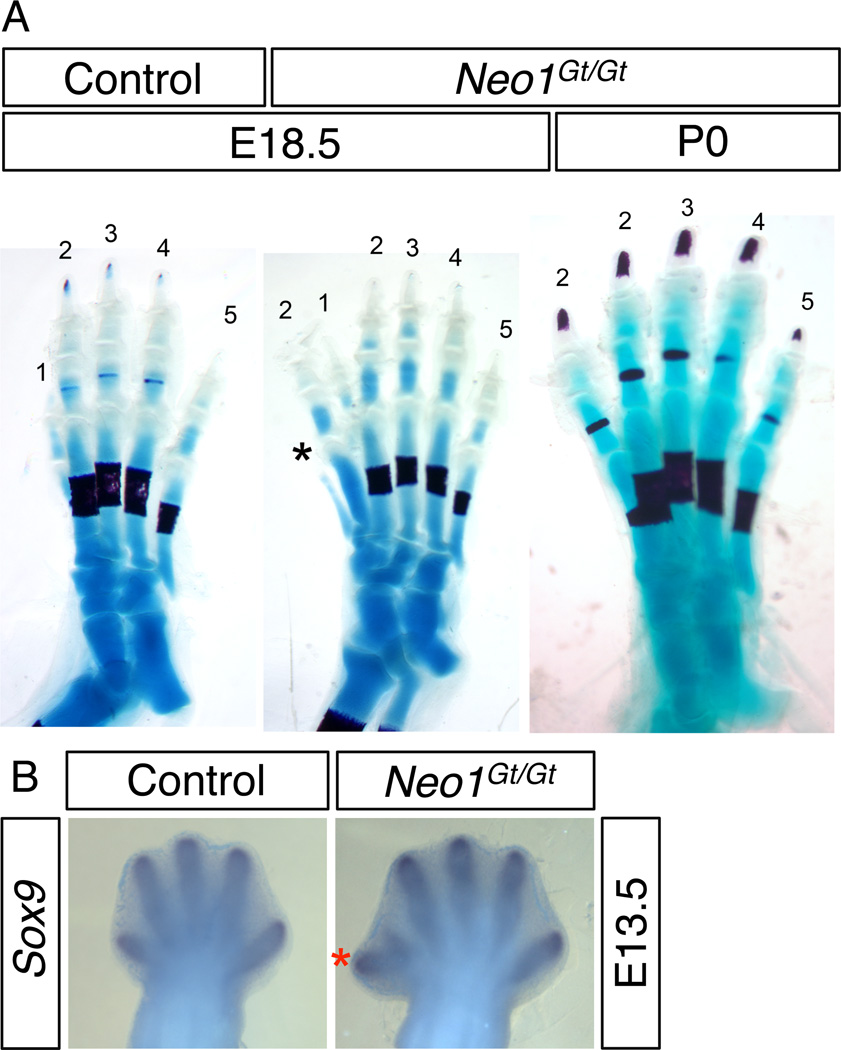Fig. 1.
Neo1Gt/Gt mice display preaxial polydactyly. A: The right hindlimbs from control (Neo1+/+ or Neo1+/Gt) and Neo1Gt/Gt mice at E17.5 or P0, as indicated. Embryos were stained with Alizarin Red and Alcian Blue to identify bone and cartilage structures. Numbers over toes represent digit identity. Note that the Neo1Gt/Gt limb at E18.5 has an extra digit 2 and additional rudimentary metatarsal (asterisk) on the anterior side, whereas the Neo1Gt/Gt limb at P0 has an identity shift of digit 1 to digit 2. B: Whole mount in situ hybridization of the early chondrogenesis marker Sox9 at E13.5. The red asterisk indicates an extra digit.

